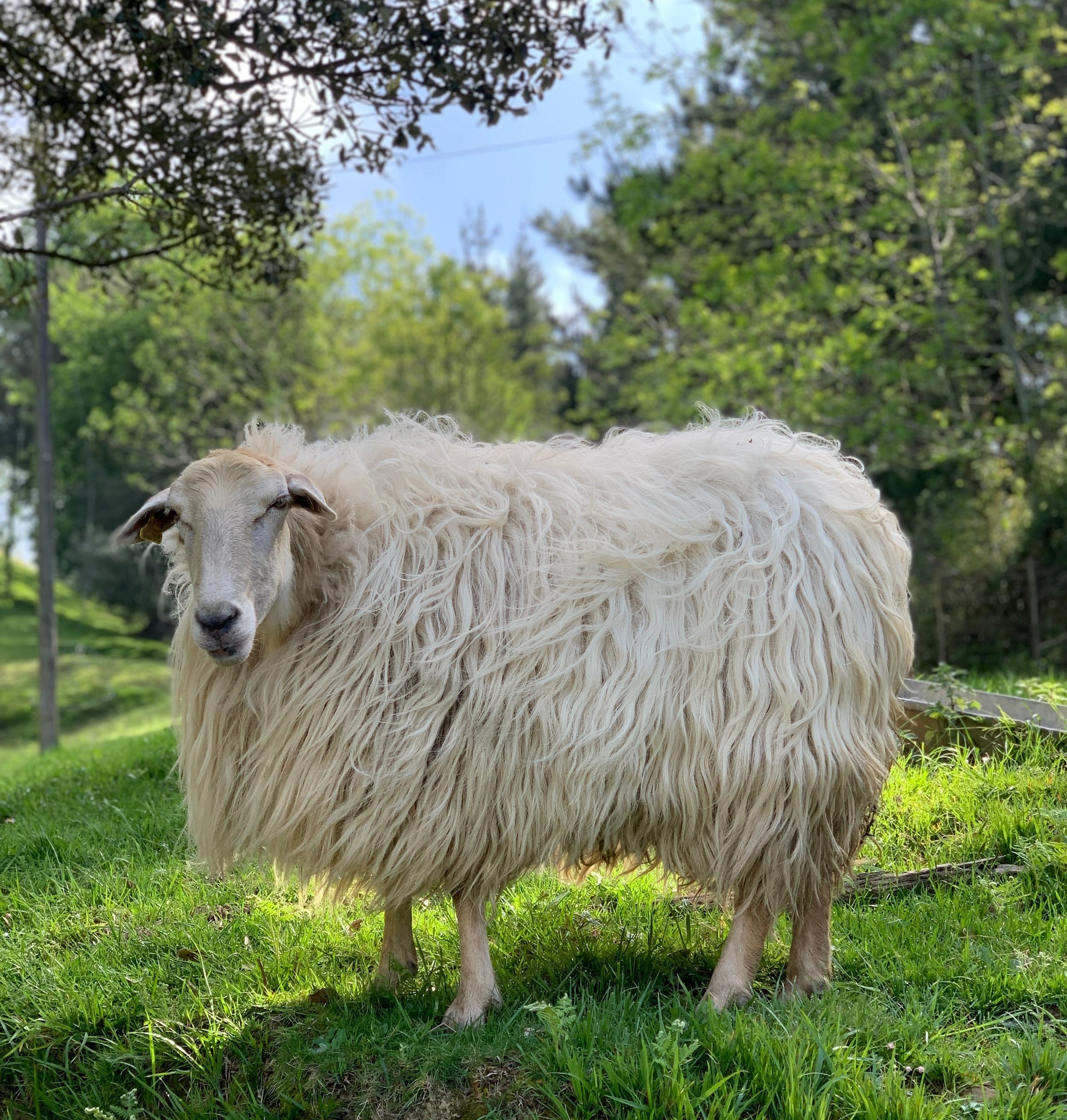Camino del Norte: Getaria to Deba
I awoke with pain radiating down through my right leg due to my pre-Camino lower back issues. It didn’t help that the bunk bed was way too tiny for my 6’3” frame. The pain created a visible limp which did not go unnoticed by other pilgrims who kept asking if I had blisters. I eventually just started lying and said that I did because discussing my lower back disc herniation is not how I wanted to spend my Camino.
90% of my clothing for this trip is wool.
For most of the morning I walked with three German peregrinos. One of those peregrinos was a woman named Anja who I had briefly met on my first day leaving from Irún. Part of the joy of the Camino is running into people you weren’t sure if you were ever going to see again at various stages along the route. Anja was one of the few pilgrims I had met that was planning on walking the entire way to Santiago this trip. She too quit her job to travel, although that had mostly taken the form of an RV she drove around Europe for the past year. That’s pretty badass.
Germans are overrepresented on the Camino de Santiago but especially on Camino del Norte. A bestselling memoir about the Camino called I’m Off Then: Losing and Finding Myself on the Camino de Santiago was published in 2009. Written by a German comedian, it sold 3 million copies in Germany and their publisher claims that pilgrimages to Santiago have increased 20% since its publication. Anja also explained to me that Norte is particularly popular with Germans because it’s a more serious hike and many Germans find the Frances too mild and not scenic enough for their taste.
I was treated to more gorgeous views of the coast and picturesque farms. We stopped at the grocery store in a town called Zumaia since they had been closed for two days and would be closed for Easter as well. Zumaia is a great stop for pilgrims as it has a converted convent that now operates as an albergue.
At one point the Camino diverged with a coastal option that’s not part of the official Camino. Being able to see those friendly yellow arrows along the route was important to me so I stayed on the main route while the Germans took the coastal route. I listened to a true crime podcast called “Criminal” and these stories of murderers, thieves, and crooks helped me limp along at a leisurely pace. As I made my way through the Camino my path converged with the coastal route and I improbably ran into my fellow pilgrims at the exact moment the paths converged.
Because we started this stage of the Camino in Getaria instead of Zarautz, we arrived pretty early at the town of Deba. As we arrived we spotted an enormous glass elevator that takes you down into town. After considering for a few moments if this was “cheating” we decided to take the elevator. The albergue in Deba is inside of an old train station near the center. It was only 5€, which was a nice surprise.
There are many different kinds of albergues on El Camino. As Norte becomes more popular, more albergues are starting to open up. Unfortunately many are only open during the summer months on Norte which changes the calculus when you are determining how far you are going to walk. Albergues are similar to hostels but are usually even more spartan. They rarely have lockers or sheets. Their kitchen can be anything from a microwave on top of a beverage refrigerator to full-size with an industrial dishwasher. Albergues can also be what’s called “Parochial.” This means that they are on the religious side and may include some sort of mass as part of the evening. Albergues generally close (lights out!) at 10 or 1030 and kick you out by 8 or 830. Most albergues seem to only allow pilgrims to stay there, which is where the pilgrim credential comes in handy. The pilgrim credential is a document that can be purchased from any albergue. When you check-in to an albergue you have them stamp and date your credential to indicate your path along the Camino. If the dates look fishy, the hospitalero (volunteer host) it could raise some questions about how you are doing the Camino. There are 3 officially sanctioned methods of progressing on the camino: foot, horse, and bicycle. I have yet to see a horseback pilgrim.
Shortly after I arrived at the albergue I saw Sandra, who I figured was way ahead of me since I spent an extra day in San Sebastián.
We were told the albergue was near the train station…not that it WAS the train station.
“SCOTT!!!” she yelled, slightly startling me. It’s one of the really cool parts of the Camino is that surprise of running into people along the way. We put our stuff away and headed out to the beach. I laid out and celebrated 4/20 with my pen and napped on the beach.
A small bathing suit is crucial when you’re backpacking and trying to save weight





